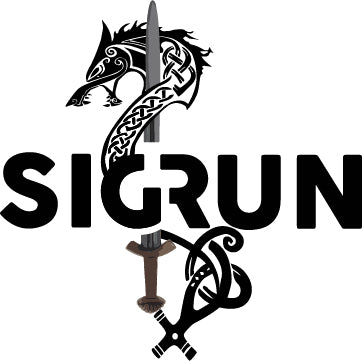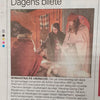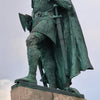The Icelandic Wolf Mjölnir pendant / cross

 The “Wolf Mjölnir” was found around the year 1910 AD at Fossi, Hrunamannahreppi in Iceland, at a location where two spear heads and an axe had previously been discovered. This Mjölnir is unique as no finds anywhere else have remotely resembled it and it is believed that is it an Icelandic design from the Saga age which spans the period from when Iceland was first settled by Norsemen and through to 1050 AD. Iceland became a Christian country in the year 1000 AD so it is likely that this Mjölnir dates to around or after that year. It is believed it was carried as a protective amulet.
The “Wolf Mjölnir” was found around the year 1910 AD at Fossi, Hrunamannahreppi in Iceland, at a location where two spear heads and an axe had previously been discovered. This Mjölnir is unique as no finds anywhere else have remotely resembled it and it is believed that is it an Icelandic design from the Saga age which spans the period from when Iceland was first settled by Norsemen and through to 1050 AD. Iceland became a Christian country in the year 1000 AD so it is likely that this Mjölnir dates to around or after that year. It is believed it was carried as a protective amulet.
A cross or a Mjölnir
The area where it was found was a hotspot during the Saga age where a lot of killings occurred (Brennu Njáls Saga is just one of them). When Christianity came to Iceland, it was understood that the country would be labelled as Christian even though Christianity had not gained a foothold amongst all people. This was a means to prevent the King of Norway from having to wage war upon Iceland, which wasn´t in his best interest nor was it in the interest of the Icelandic people. However, people could remain pagan “behind closed doors” – it was “overlooked” as we would say. A lot of exceptions were made from the church to pacify the pagans so that the country would not have to be divided and as such many customs, folk behaviour and even language has remained intact to this day.
The Wolf Mjölnir bears a deep resemblance to a symbol that dates back to the Nordic Bronze age, which many describe as a sun dial. Crosses were very spiritual symbols long before Christianity came along and for me, it represents something much deeper than that and the Mjölnir itself echoes the truth of that meaning and is a perfect tangible example of the use of both wisdom and knowledge; the wisdom to incorporate a Christian symbol but the knowledge of the true representation of the hammer. It is not only a symbol of defiance but also one of loyalty, knowledge, wisdom and protection.
For this reason, it is my belief that it is both a Cross and a Mjölnir.
A Wolf or a Dragon?
 The head of the pendant is generally referred to as a Wolf but some refer to it as a Dragon. I question the latter interpretation for these reasons.
The head of the pendant is generally referred to as a Wolf but some refer to it as a Dragon. I question the latter interpretation for these reasons.
Symbolism in Iceland was and still is of huge importance. When the country was settled, it was established that it was guarded by four landvættir (land spirits). Their purpose is to protect the area where they live and bless it with prosperity. The area can range in size from a small rock to a mountain range. In Iceland, each land quarter has a very powerful spirit to protect the land. The four landvættir are the dragon (Dreki) who protects the east, the eagle (Gammur) which guards the north, the bull (Griðungur) shelters the west, and the giant (Bergrisi) shielding the south.
However, in the Book of Settlement, it is decreed that it was banned to have a dragon-prow on a ship, be it in harbour or sailing towards land "with gaping mouth or yawning snout," as this could frighten the landvættir.
Why would then any son of Iceland carry around his neck a protective charm with a dragon head? It makes no sense and would defy not only the landvættir and the law but also the people and their beliefs.
Wolves however, were seen as both being negative and positive amongst the Nordic people. They represented chaos and destruction (e.g. Fenrir, Sköll, and Hati), while on the other hand, they also represented bravery, loyalty, protection, and wisdom – all of whom are symbolised in the Icelandic Mjölnir.
Even in Valhalla, the door facing West has a Wolf guarding it. If it was good enough for Óðinn, then surely it was good enough for a son of Iceland.
This is of course just my personal view based on my own understanding from reading various sources. Those sources include (but are not limited to) Kuml og Haugfé by Kristján Eldjárn, Landnáma, Brennu-Njáls Saga, Menningarminjar í Hrunamannahreppi eftir Sædís Gunnarsdóttir, Edda, Konungsbók Ólafs Tryggvasonar, Goðafræði by Finnur Jónsson





